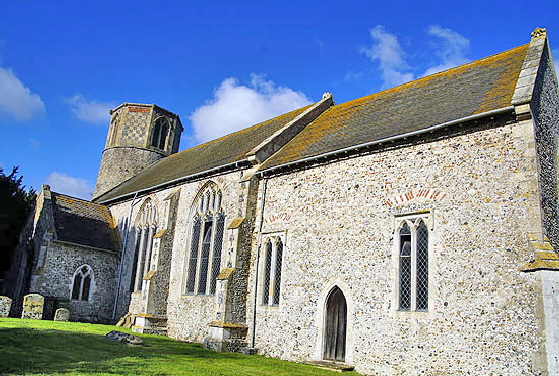|
Alphabetical List |
|
|
|
|
|
|
|
County List and Topics |
|
|
|
Please sign my Guestbook and leave feedback |
|
|
||||||||||||||||||||||
|
Inside, all is ancient. The font is a square Norman design. It is nicely varied in its four decorative designs. The piece de resistance is, however, the wooden screen. It has its origins in the fourteenth century and it is impossible to know how much of it has been replaced. It is somewhat austere but, unusually, has two doors intact. It looks just right. Indeed, as you look around you, you are probably seeing a building that would be instantly recognisable to parishioners from half a millennium or more before. “Timeless” is an over-used word - not least by myself - but the epithet fits perfectly here. |
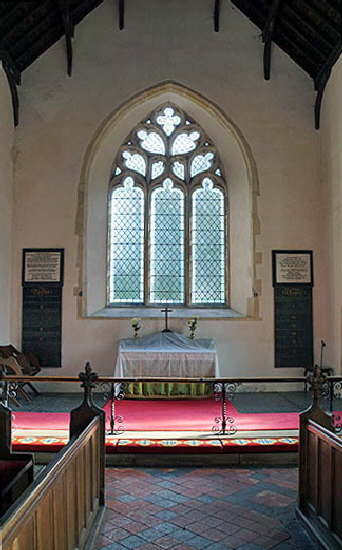 |
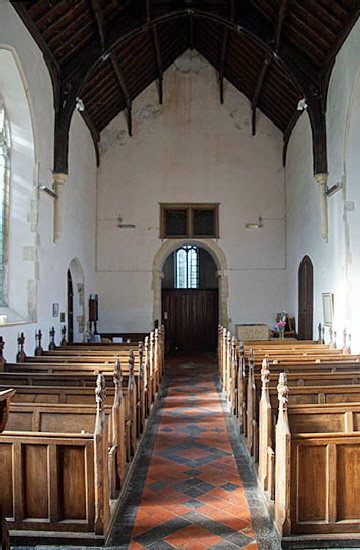 |
|||||||||||||||
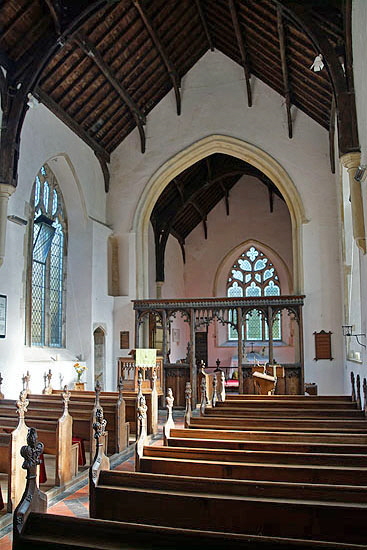 |
||||||||||||||||
|
Left: Looking towards the east and the screen. Centre: The chancel is perhaps a little spartan. The east window is in the curvilinear Decorated style. Right: Looking towards the west. The tower arch is Anglo-Saxon. I am not able to decide if the roofline is the original one. To the right, by the north door, is the Norman font. |
||||||||||||||||
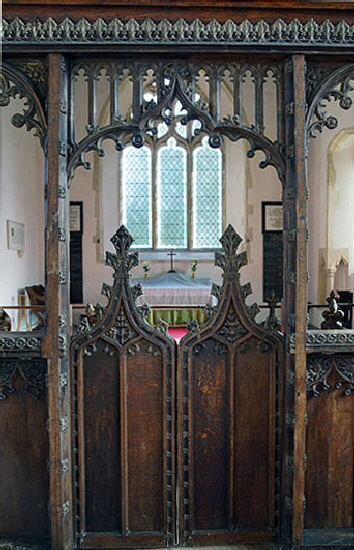 |
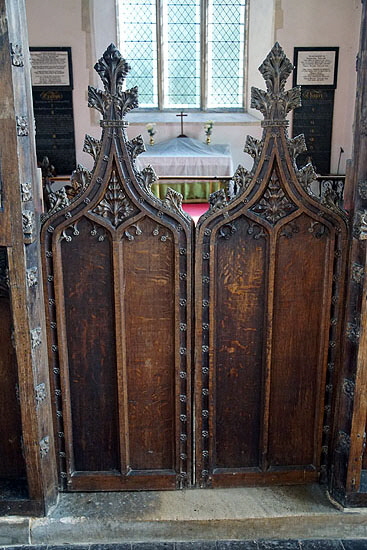 |
|||||||||||||||
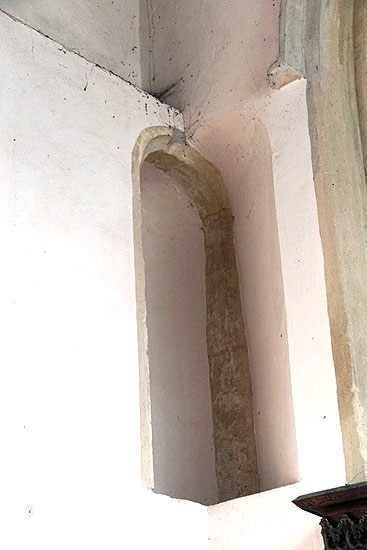 |
||||||||||||||||
|
Right and Centre: detail of the chancel screen. Right: The rood loft. |
||||||||||||||||
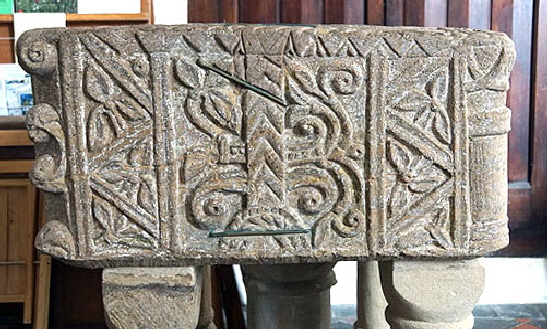 |
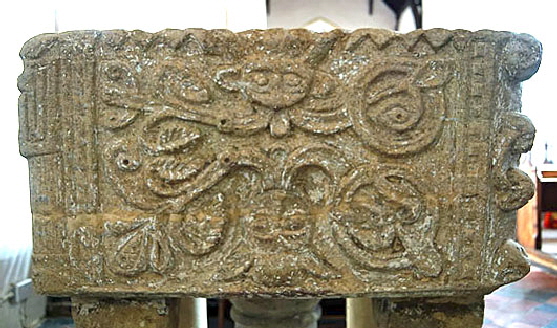 |
|||||||||||||||
|
Left: The south face of the font decorated with stylised foliage. The corners of the font are curiously inconsistent. On the left is foliate scroll-work whereas the other corner is a simple stylised design. Right: Curiously, Pevsner described this side - the west - also as being of foliage. In fact, the design is of two masks with foliage coming from their mouths - the larger one of them inverted. |
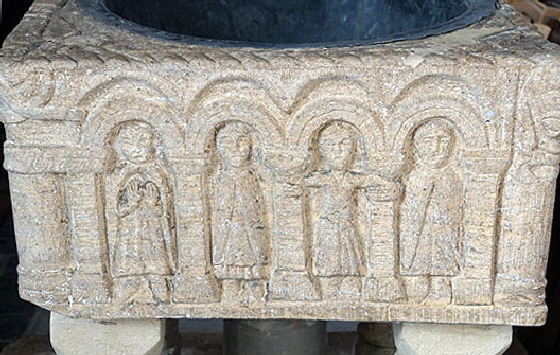 |
|||||||||||||||||||||||||||||||||||||||
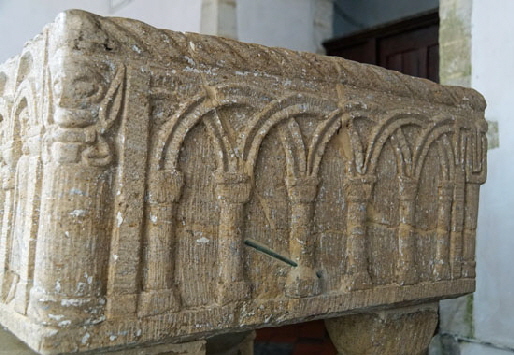 |
|||||||||||||||||||||||||||||||||||||||
|
Left: The east side has four figures standing beneath round arches. Right: The north side has a simple blind arcading design, quite well-executed. |
|||||||||||||||||||||||||||||||||||||||
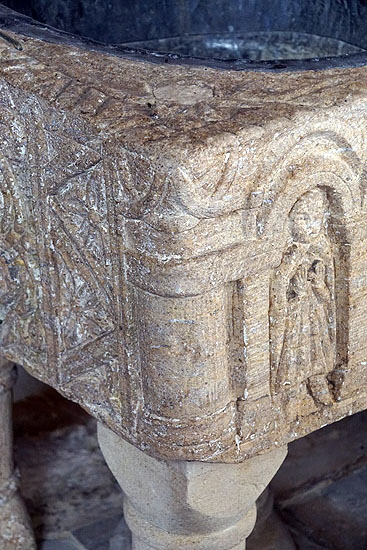 |
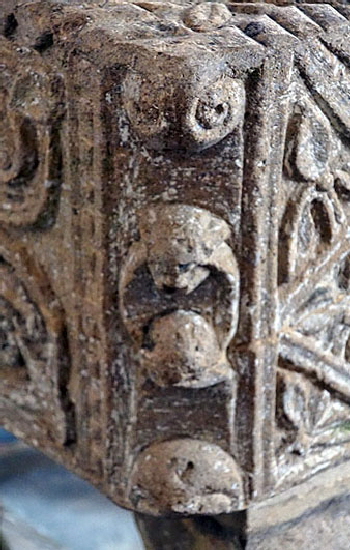 |
||||||||||||||||||||||||||||||||||||||
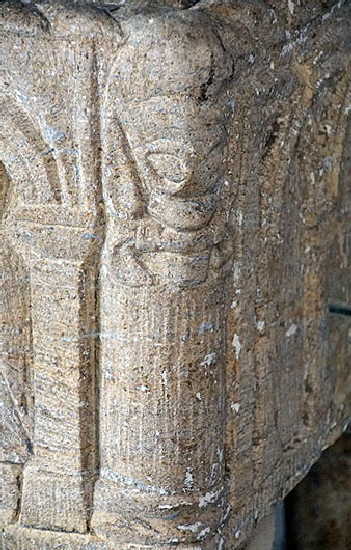 |
|||||||||||||||||||||||||||||||||||||||
|
Three of the four very varied corner carvings on the font. The left hand picture of the north-east corner shows a carved head, This is far from unusual but it would be more normal to have a head at each of the four corners. This is a very interesting font. It is not the best-carved but nor is it by any means the worst and the mason seemed anxious to really mix up his imagery. |
|||||||||||||||||||||||||||||||||||||||
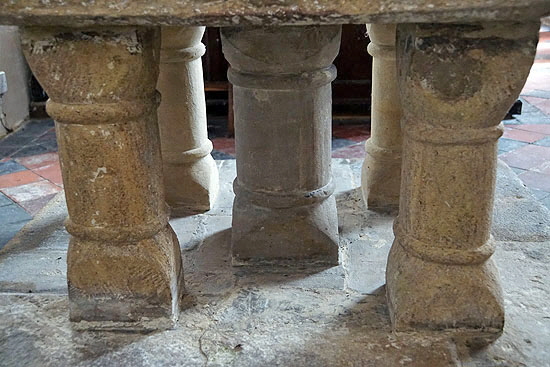 |
|||||||||||||||||||||||||||||||||||||||
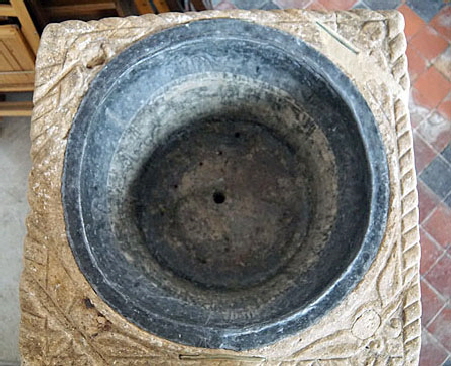 |
|||||||||||||||||||||||||||||||||||||||
|
Left: This view from above the font shows that each corner of the top surface has been decorated. Right: The font stands on four baluster-like legs. The central one, I suspect, was added subsequently. |
|||||||||||||||||||||||||||||||||||||||
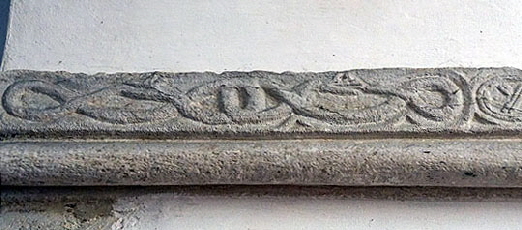 |
|||||||||||||||||||||||||||||||||||||||
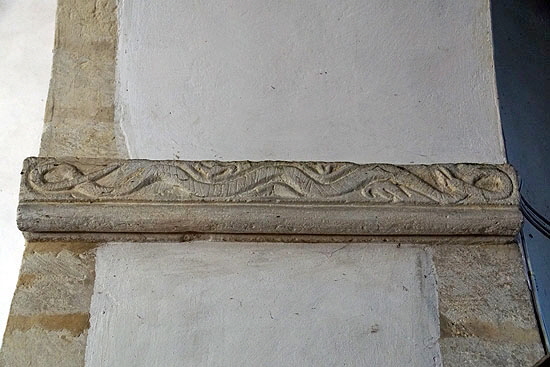 |
|||||||||||||||||||||||||||||||||||||||
 |
|||||||||||||||||||||||||||||||||||||||
|
Left Upper and Lower: The decoration on the impost block on the north side of the tower arch. Right: The south side decoration. Scandinavian influence is very obvious here, with writhing serpents and interlace work. It has a curiously unplanned look: almost like sculptured doodles especially on the north side. |
|||||||||||||||||||||||||||||||||||||||
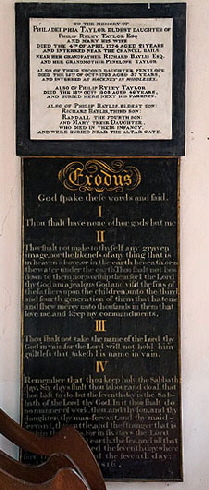 |
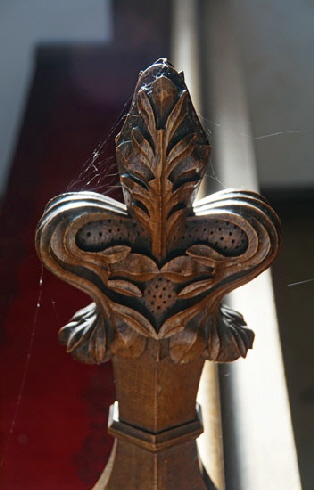 |
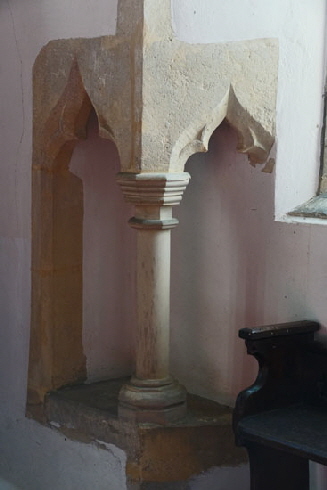 |
|||||||||||||||||||||||||||||||||||||
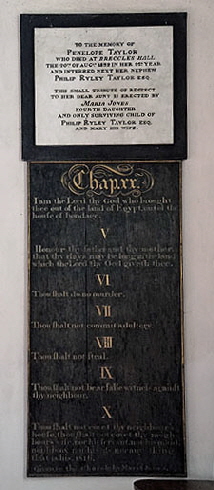 |
|||||||||||||||||||||||||||||||||||||||
|
Left and Second Left: Slabs either side of the altar proclaim the Ten Commandments, Exodus Ch XX. Second Right: The benches are possibly Victorian and certainly not mediaeval but that does not mean that the poppy heads are not nice pieces. Right: The nice little corner piscina. The sedilia here is a simple ledge. |
|||||||||||||||||||||||||||||||||||||||
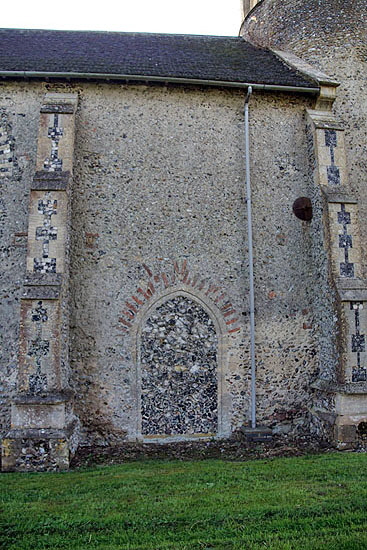 |
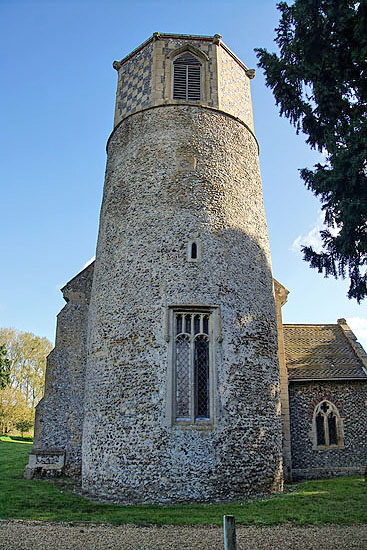 |
||||||||||||||||||||||||||||||||||||||
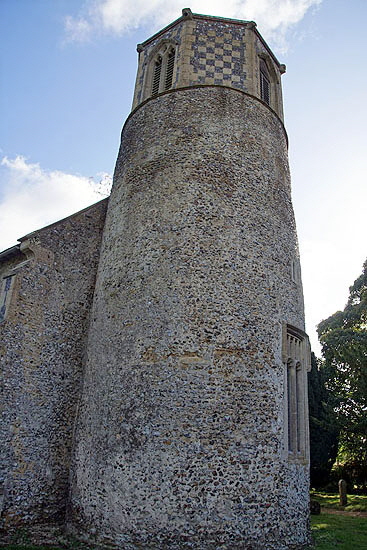 |
|||||||||||||||||||||||||||||||||||||||
|
Left: The blocked north door. It is inconceivable that is the outline of the original doorway. The clue here perhaps is in the course of terracotta tiles around its outline. This is in the style of the Perpendicular windows of the nave. Centre: The tower from the west. The Perpendicular style rectangular window is tall and narrow and well suits the tower aesthetically. Right: The tower from the north. It is windowless and forbidding and ammunition for those (I am not one of them) who would propose that these round towers had a defensive role. |
|||||||||||||||||||||||||||||||||||||||
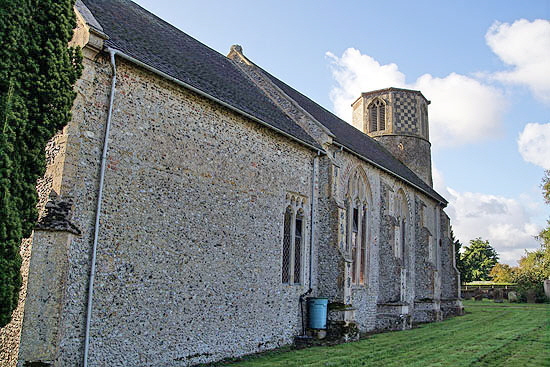 |
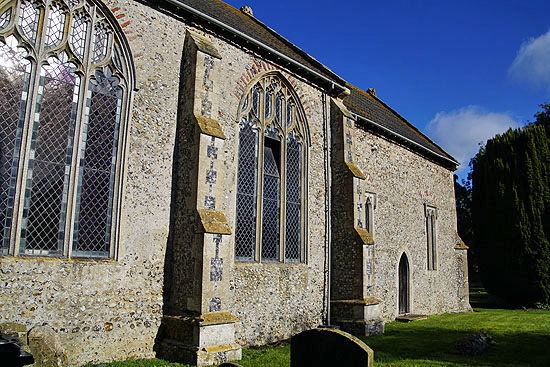 |
||||||||||||||||||||||||||||||||||||||
|
Left: The church from the north. There is little written about this church. What we can almost certainly say is that the nave and chancel are both substantially higher than they were originally, given that we can see the original height of the tower. That would have happened, one presumes, when those full-height Perpendicular style windows were installed; I am guessing in the fifteenth century. Right: The church from the south. |
|||||||||||||||||||||||||||||||||||||||
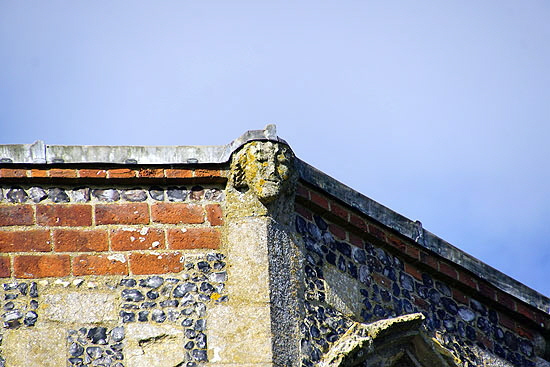 |
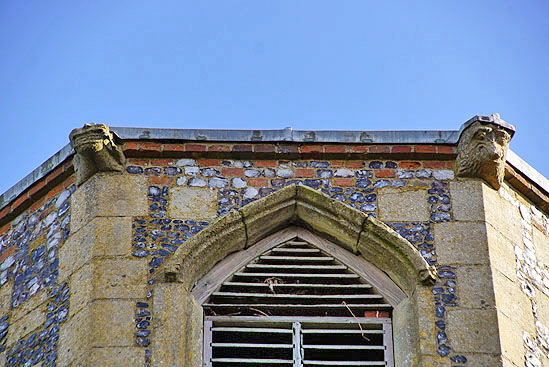 |
||||||||||||||||||||||||||||||||||||||
|
Left and Right: These carvings appear at each angle of the octagonal tower top stage. They are often described as “gargoyles” but they palpably have no drainage function and certainly no tower would need eight of them. |
|||||||||||||||||||||||||||||||||||||||
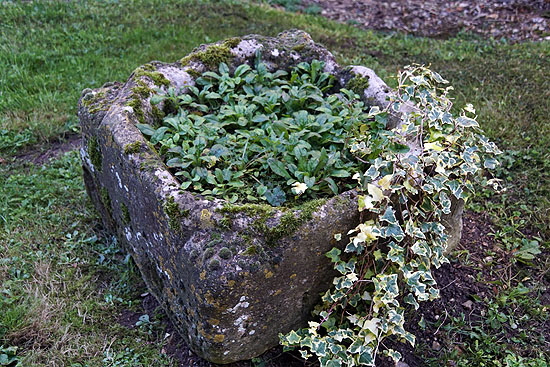 |
|||||||||||||||||||||||||||||||||||||||
|
This is believed to possibly have also been a font but as the one here is Norman it can only have come from elsewhere. |
|||||||||||||||||||||||||||||||||||||||
